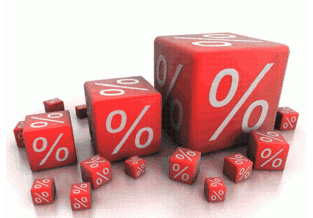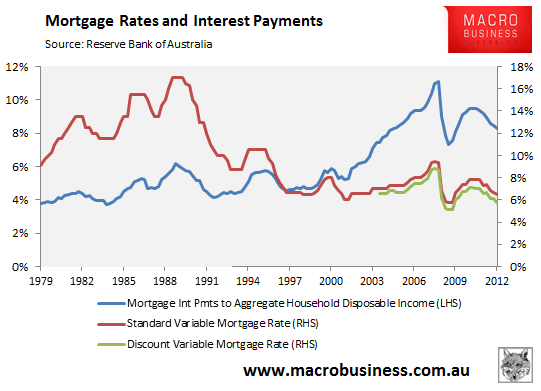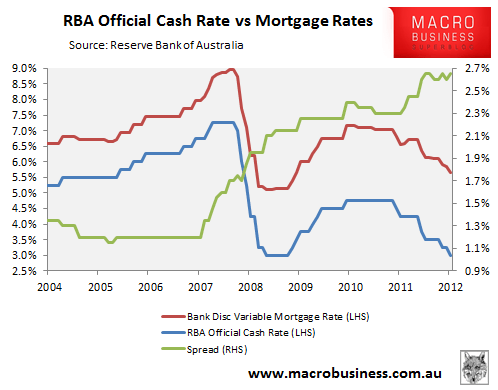
Yesterday, Houses & Holes (H&H) correctly challenged the view that the official interest rate, which was lowered yesterday to 3% (the same level as the Global Financial Crisis), was at emergency low levels:
Interest rates are not at an “emergency low”. We are not in an emergency. That this cycle is different to that which transpired in 2009 is obvious. Fiscal policy is completely different, the global and local economy’s are completely different and consumer behaviour is also different. Aside from anything else, owing to wider spreads, actual mortgage rates are still 50-60bps above GFC lows.
To illustrate H&H’s last point about mortgage rates being 50-60 basis points above the GFC lows, I have created the below chart, which tracks the standard variable mortgage rate and the discount variable mortgage rate over time, and also shows the proportion of aggregate household disposable income consumed by mortgage payments. Note that I have assumed that the banks pass on 20 basis points of yesterday’s interest rate cut and have estimated that aggregate mortgage interest payments fell by 0.3% between June and December 2012 following the 0.5% of cuts to mortgage rates.

According to the data, variable mortgage rates will remain 55 basis points (discount variable mortgage rate) and 70 basis points (standard variable mortgage rate) above the GFC low of 5.10% (discount) and 5.75% (standard) reached in mid-2009. The proportion of aggregate income devoted to mortgage payments will also be around 1.0% higher than the mid-2009 low.
The reason for the higher mortgage rates and interest payments this time around is that the banks have not passed on as much of the interest rate cuts to mortgage holders and/or have raised their mortgage rates independently of the RBA (see below chart).

Based on this data alone, interest rates won’t be at “emergency levels” until another 1% is shaved off the official cash rate, taking it down to 2%.
Twitter: Leith van Onselen. Leith is the Chief Economist of Macro Investor, Australia’s independent investment newsletter covering trades, stocks, property and yield. Click for a free 21 day trial.

